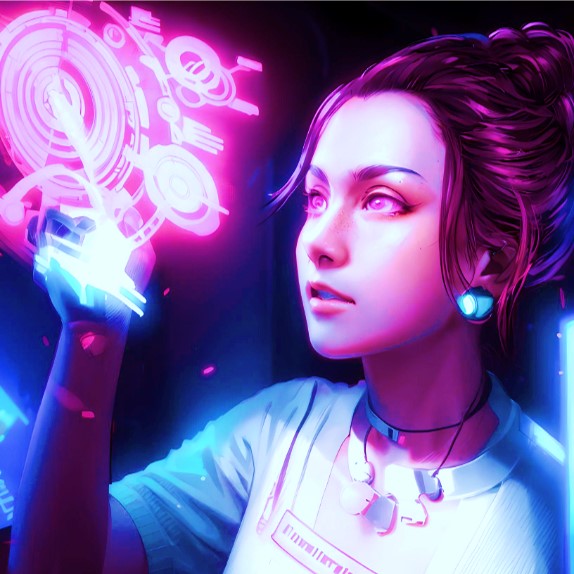 Navigating Digital Interfaces: The Quintessential Skill Needed to Adapt and Innovate Our Future Workforce
Navigating Digital Interfaces: The Quintessential Skill Needed to Adapt and Innovate Our Future Workforce
by Laurie Howell
HR is evolving in this new technological world, and it’s time to start embracing it, acclimating to it, and evolving along with it as leaders.
In a world increasingly shaped by technological advancements, the ability to navigate digital interfaces is becoming a cornerstone of success in the future of work. As artificial intelligence (AI) transforms industries and workflows, mastering these tools is not just about convenience—it’s essential for innovation, productivity, and inclusivity. The evolution of work requires individuals and organizations to embrace a skill set that blends technical proficiency with adaptability, creativity, and collaboration. This shift will redefine how workforce planning addresses emerging needs, especially in the following areas:
Data Interpretation
One of the most critical skills for the workforce of the future is the ability to work with raw data. The capability to interpret vast amounts of information and generate meaningful insights is a game-changer. AI tools enable employees to predict trends, assess risks, and make informed decisions with speed and accuracy. This creates opportunities for proactive rather than reactive roles, empowering teams to guide strategy with real-time data.
Performance Management
Equally transformative is the ability to track progress and use predictive guidance to chart a clear path forward. Tools that integrate real-time analytics into workflows allow organizations to monitor performance and forecast outcomes. These capabilities redefine workplace roles, emphasizing strategic thinking and long-term planning over traditional task execution.
Learning & Development
AI interfaces are also breaking down barriers to equitable inclusion. By offering targeted self-learning opportunities tailored to individual needs, they provide a personalized approach to upskilling. Employees, regardless of background, can acquire skills on-demand, fostering a more diverse and adaptable workforce. This shift not only reduces skill gaps but also creates a more inclusive environment where talent thrives.
The dynamic nature of work today demands the ability to adapt on the fly. On-the-spot learning platforms are increasingly critical, enabling employees to develop new skills or refine existing ones in response to immediate challenges. This agility is vital for keeping pace with rapid changes and ensures that organizations remain competitive in evolving markets.
Productivity & Asynchronous Collaboration
Collaboration is another cornerstone of future work. AI-powered platforms facilitate real-time knowledge sharing and teamwork, whether teams are in the same room or spread across the globe. These tools create opportunities for asynchronous collaboration, ensuring productivity in remote and hybrid work environments. The ability to seamlessly share insights and ideas fosters innovation and accelerates problem-solving.
Recruitment & Hiring
The recruitment process is also being revolutionized. With AI interfaces, employers can pre-assess potential hires, simulating their future impact on the organization. This streamlines hiring and reduces uncertainty, helping companies identify the best fit with greater precision. Additionally, real-time updates for job seekers remove the “black hole” of applications,ensuring transparency and improving candidate experience.
Workplace Safety
Safety and operational efficiency are enhanced through AI’s ability to provide visual overviews of workflows. By identifying potential risks and troubleshooting issues, these tools allow for immediate adjustments, minimizing disruptions and ensuring workplace safety. Organizations benefit from AI’s ability to quickly adapt processes, maintaining a smooth flow of operations.
Creativity & Innovation
The creative and strategic aspects of work are also experiencing a transformation. AI tools are now partners in brainstorming sessions and strategy development, generating ideas and building the foundation for innovative solutions. This collaboration allows teams to focus on refining concepts and making informed decisions.
Moreover, a global perspective is more accessible than ever. AI can analyze international trends, enabling businesses to understand and respond to unmet needs in various markets. This global insight fosters innovation, helping organizations expand offerings and reach diverse audiences.
Automated analysis drives productivity by handling repetitive tasks, freeing up employees to engage in complex, high-value work. This balance between automation and human creativity ensures that organizations can scale operations efficiently while maintaining a focus on innovation.
Workforce Planning
AI also plays a pivotal role in long-term workforce planning. Its predictive capabilities help organizations identify emerging trends and skill requirements, ensuring that resources are allocated effectively. This forward-thinking approach positions companies to thrive in an ever-changing landscape.
Culture
As these technologies reshape recruitment, workflows, and learning, transparency, and trust become paramount. Real-time updates in hiring, personalized development plans, and equitable access to tools create a sense of empowerment and belonging for employees. The future of work hinges on not just mastering interfaces but leveraging them to create environments where individuals and organizations can grow together.
By embracing these advancements, companies can redefine their approach to workforce planning, ensuring they are not only prepared for the future but positioned to lead it. In this new era, the ability to navigate, adapt, and innovate is more than a skill—it’s the key to sustained success.
________________
Contact us today at https://austinpeopleworks.com/contact and discover how we can support your HR needs and your company’s journey to success.
